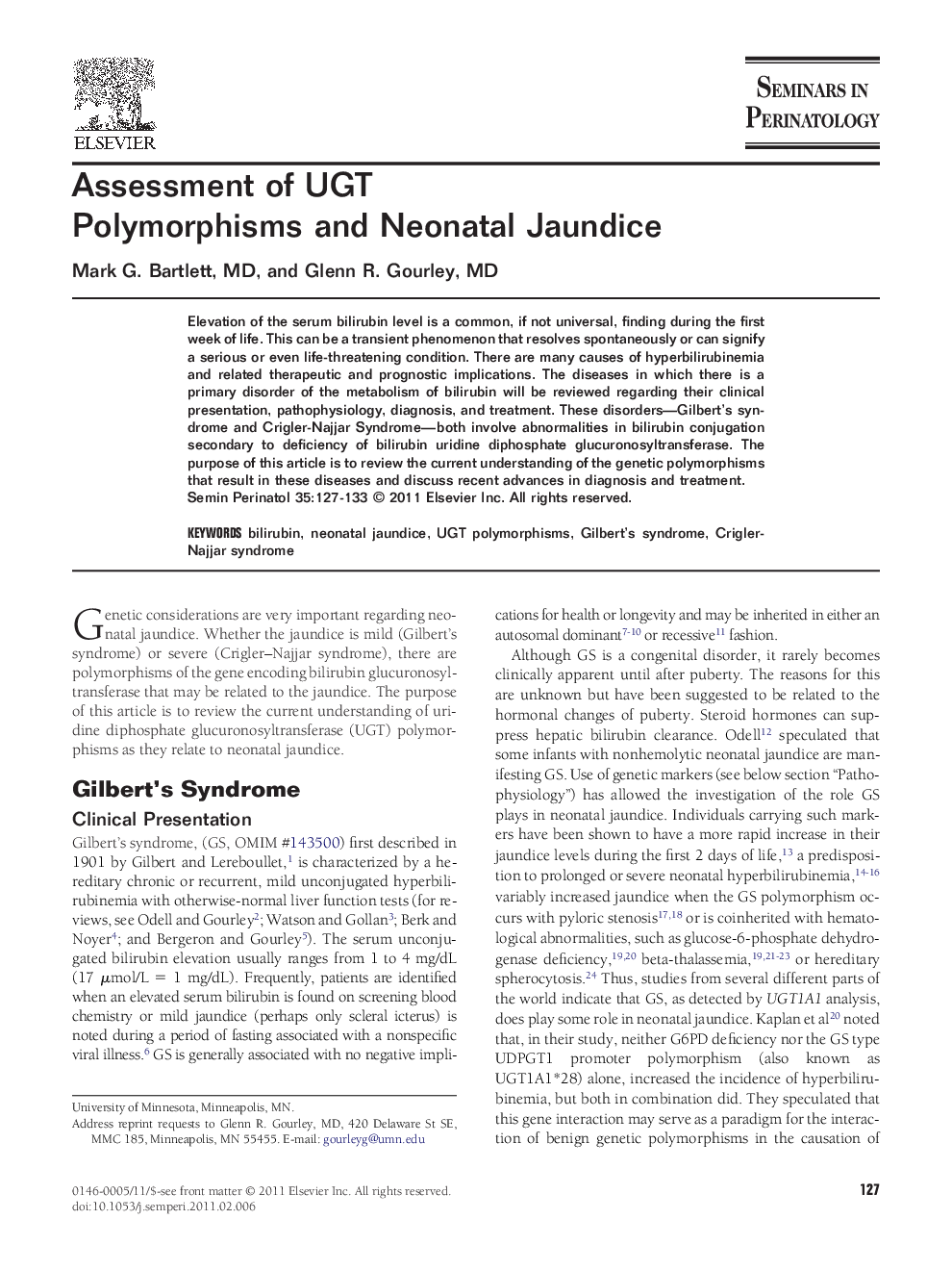| Article ID | Journal | Published Year | Pages | File Type |
|---|---|---|---|---|
| 3836528 | Seminars in Perinatology | 2011 | 7 Pages |
Elevation of the serum bilirubin level is a common, if not universal, finding during the first week of life. This can be a transient phenomenon that resolves spontaneously or can signify a serious or even life-threatening condition. There are many causes of hyperbilirubinemia and related therapeutic and prognostic implications. The diseases in which there is a primary disorder of the metabolism of bilirubin will be reviewed regarding their clinical presentation, pathophysiology, diagnosis, and treatment. These disorders—Gilbert's syndrome and Crigler-Najjar Syndrome—both involve abnormalities in bilirubin conjugation secondary to deficiency of bilirubin uridine diphosphate glucuronosyltransferase. The purpose of this article is to review the current understanding of the genetic polymorphisms that result in these diseases and discuss recent advances in diagnosis and treatment.
